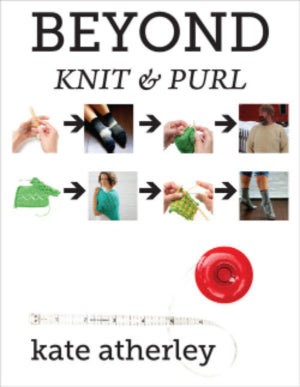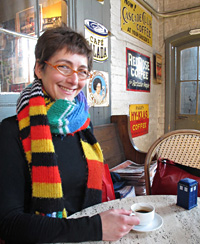The back looks like this:

The fronts look like this:

At this stage, you should seam the shoulders together. (This step is saved if you start the fronts by picking up stitches, of course.)
You'll have something that looks like this...

And from here, it's easy.
If you're working an open vest, just work back and forth on the united stitches; if you're working a closed vest, work in rounds.
It will look like this, and you'll be able to try it on, and add waist shaping as required...

And I'm clearly on a roll with this method, because I've made another one.

This was a leftovers vest, using up some Cascade 220 from a design project. I wanted the vest fitted so that it would be a good layer under a jacket - and frankly, because I didn't have that much yarn. It's the length it is because I ran out of the white! Precisely the advantage of working top-down! There's fairly extreme bust/waist shaping, to keep it fitted and snug.
If you're working top-down and are truly worried about running of yarn, then I recommend working the neck and armhole edgings before you continue with the body.






No comments:
Post a Comment